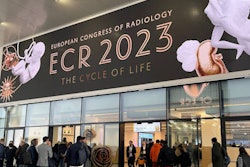
Racial and gender disparities continue to persist in academic radiology, with degree types and tenure track contributing to the trend, according to a report published December 9 in Clinical Imaging.
A team led by Dr. Sadia Raheez Qamar from the University of Toronto found that while Asian radiology faculty saw overall improvement in representation, other races and women continue to experience underrepresentation in academia. Also, the majority of tenured track faculty and faculty with medical or doctoral degrees were primarily male and white, the report found.
The results are of particular concern since diversity has such a beneficial effect on the healthcare enterprise, Qamar's group noted.
"Increasing diversity in the healthcare workforce helps mitigate healthcare disparities, improves access to care, achieves health equity, and improves patient care and outcome ... [and] physician gender and racial diversity have been linked to improved patient care and improved physician recruitment in underserved areas," they wrote.
Previous reports highlight disparities in academic ranks and leadership positions in different radiology subspecialties, and institutions and organizations have worked to assess and advocate for increased diversity in academic medicine.
Qamar and colleagues sought to assess the relationship between tenure, degree, sex, and race across U.S. academic radiology programs via a study that consisted of data from the American Association of Medical Colleges between 2007 and 2018. A total of 107,213 radiologists were included in the study.
The team found that out of this total of radiologists, 76,893 (72%) were male and 68,738 (64%) were white. Of the white faculty, 1,277 were male and 872 were female.
When accounting for degree type, the researchers found that white faculty made up 67.2% of radiologists with a medical degree. Following that were Asian faculty (20.9%), multiple race faculty (3.4%), Latinx faculty (3.2%), Black (2.5%), unknown (1.8%), and "other" (1%).
White faculty recruitment trend and representation overall decreased during the study period for tenured hiring (-0.82% per year); Asian faculty representation respectively increased (0.68% per year); Latinx, unknown, and other races saw small representation increases (less than 0.05% per year); and Black and multiple-race faculty saw no change.
Women were underrepresented in all categories, despite an overall increase in presence in radiology academia, from 26.6% to 29.8%, and small increases in representation among degree types during the study period: 0.25% for medical degrees, 0.39% for doctoral degrees, and 0.67% for "other" degrees.
More efforts are needed to address these disparities, the group wrote, noting that increased diversity equips radiologists to overcome healthcare barriers for underrepresented populations that have been historically mistreated by medical institutions.
"Improving gender parity and increasing racial diversity remains an elusive yet highly desirable outcome for medicine," Qamar and colleagues concluded. "Not only is it important to have a physician population which reflects the patient demographic it is tasked to serve, but physician diversity also improves cross-cultural communication and access to a diverse group of physicians."




















